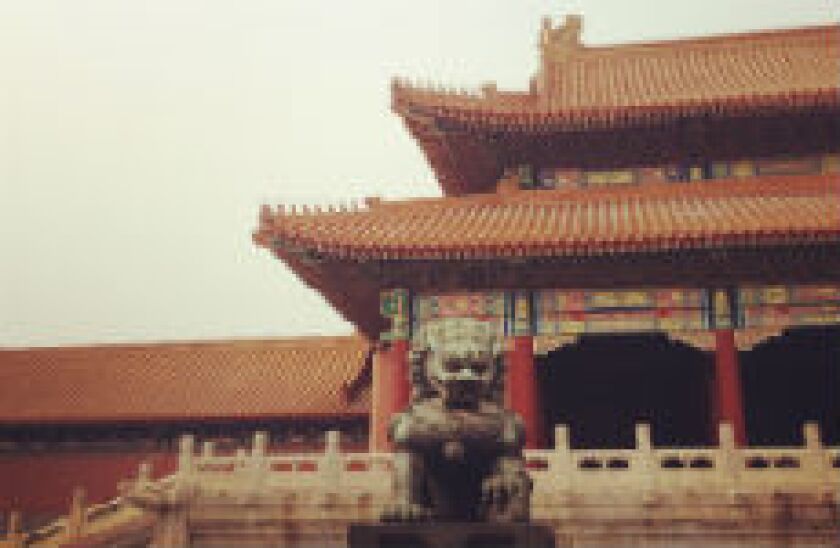The trade war drama continues and both sides are becoming more hostile.
The domestic rhetoric has been heating up in China since Monday. On the flagship news program Xinwen Lianbo, anchor Kang Hui delivered a harshly worded 90-second speech, explaining China’s stance in the trade war.
“China has made its position clear from the beginning: it does not want to fight, but it is not afraid to fight,” Kang said. “[…] The Chinese nation has experienced 5,000 years of trials. What kind of struggle have we not seen?”
On Monday evening Beijing time, the Chinese Ministry of Finance (MoF) published four tiers of retaliatory tariffs applying to $60bn of US goods. Imports from the US will be subjected to 25%, 20% and 10% tariffs in the first three lists, which are identical to the lists of the last round of tariffs. The final list, which was originally under a 5% tariff, will not incur additional tariffs. The tariffs will become from June 1.
The MoF published a second document on the same day giving Chinese importers an option to apply for an exemption from the tariffs and also receive tax reductions for already-imposed tariffs. Companies can apply for the exemption if they can prove they suffer from one of the three conditions – extreme difficulty in finding alternative products, significant economic damage as a result of the tariffs, or a seriously negative social impact or structural impact on their industry.
Soon after China raised tariffs, the US Trade Representative’s office said it was planning to hold a public hearing in June on the possibility of raising tariffs to as high as 25% on a further 3,800 Chinese goods worth $300bn. That will take up almost all the Chinese imports to the US. The list includes $43.2bn of smartphones and $37.5bn of laptop computers.
On Tuesday, US president Donald Trump said that he would meet with Chinese president Xi Jinping at the G20 summit in late June.
On Wednesday, Trump issued an executive order that effectively banned US telecom companies from installing foreign-made equipment that could pose a threat to national security. He also declared a national emergency with respect to this threat.
Shortly after, the US Department of Commerce added Huawei and 70 other companies to an “Entity List” that restricted Huawei from buying any telecom components from US companies.
“Much of Huawei’s equipment uses components sourced from US companies, so this could effectively kill large parts of Huawei’s business,” Trivium China, a consulting firm, wrote in a Thursday note.
Chinese media, however, has been surprisingly quiet on the matter. Only state news wire Xinhua published an article on Wednesday citing Huawei’s response to the ban.
“If the United States restricts Huawei, it will not make the US safer or stronger,” Huawei said in the article. “It will only force the US to use inferior and expensive alternatives and lag behind other countries in the construction of 5G networks. Ultimately, it will harm the interests of US companies and consumers.”
On Wednesday, US treasury secretary Steven Mnuchin said at a Senate hearing that he will likely travel to Beijing soon to continue trade talks with China.
In March, China's holdings of US Treasuries fell for the first time in four months, dropping $10.4bn to $1.12 trillion, according to latest data from the US Department of the Treasury. The country remained the top holder of Treasuries, ahead of Japan’s $1.08tr.
*
The People’s Bank of China and the Monetary Authority of Singapore renewed a bilateral currency swap agreement worth Rmb300bn ($43.4bn) on Monday, according to an announcement by the Chinese central bank.
The agreement is effective for three years, according to the statement.
*
In April, economic data went below expectations. Industrial production growth slowed to 5.4% year-on-year (YoY), down from 8.5% in March, according to monthly data released by the National Bureau of Statistics (NBS) on Wednesday.
Metal cutting machine tools and autos were the worst performing sectors, contracting by 25% and 15.8% YoY respectively. Retail sales of consumer goods growth also slowed to 7.2% YoY from 8.7% in March.
Zhang Min, an NBS economist, attributed the growth deceleration in retail sales to fewer holidays in April this year compared with last year.
“Manufacturing and investment are expected to take the greatest hit from the escalation in the US-China trade tensions,” Ho Woei Chen, an economist at UOB Group, wrote in a Wednesday note. “To prevent a significant growth fallout from a more prolonged and intense trade conflict, China is likely to step up its policy response measures.”
*
Foreign companies invested Rmb305.2bn in China in the first four months of 2019, a 6.4% increase YoY. In April alone, foreign investment reached Rmb62.9bn, a 6.3% increase, or in dollar terms, 2.8%, the Ministry of Commerce said in a Thursday press conference.
High tech manufacturing and high tech service industries received Rmb33.4bn and Rmb52.5bn, a 12.3% and 73.4% YoY increase respectively.
Investment from Hong Kong, Korea, Japan, the US, and Germany increased by 3.9%, 14.1%, 3%, 24.3%, and 101.1% respectively.
On the other end, onshore investors invested a total of Rmb233.4bn to 148 countries and 2,608 enterprises in the first four months.
In terms of geography, China’s investment to Asia, Europe, North America, and Africa increased 9.5%, 8.1%, 8.3%, and 40.2% YoY respectively by April this year.

